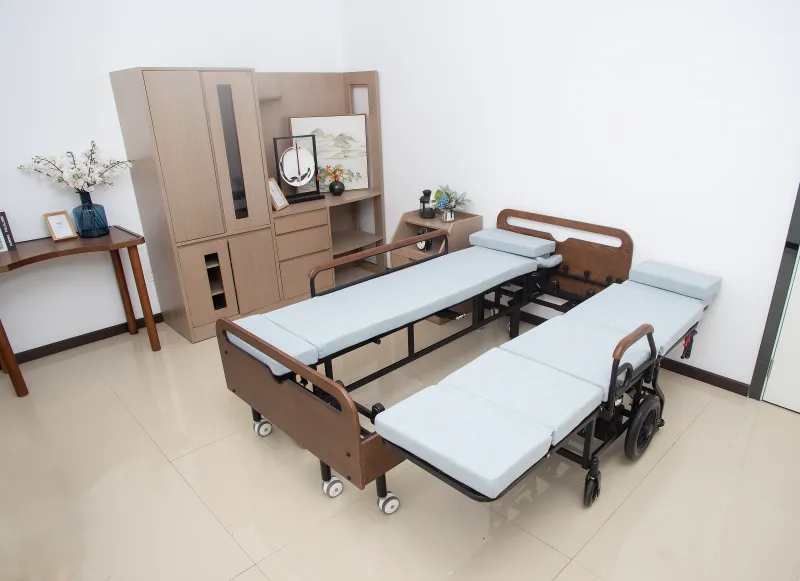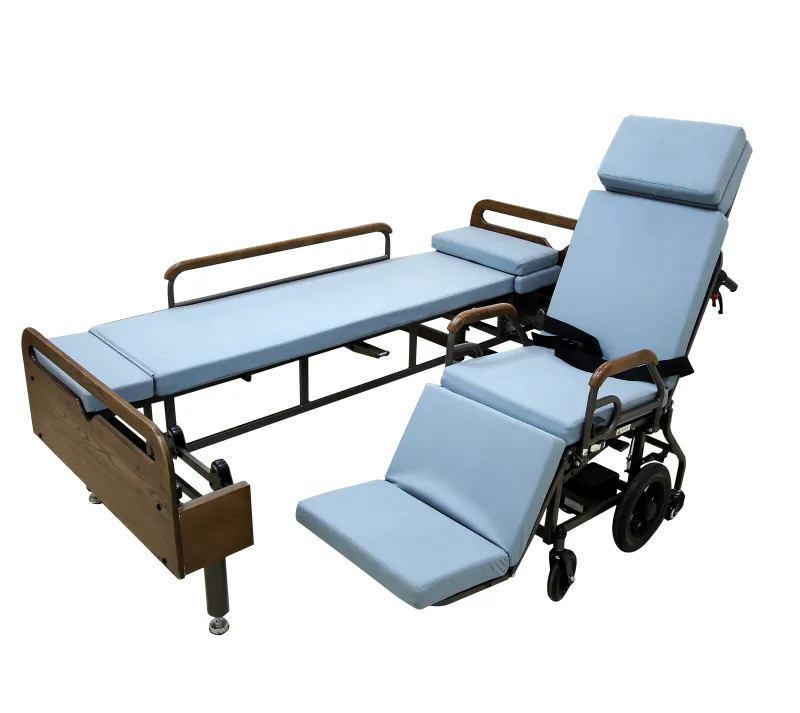
Can two people sleep in a hospital patient bed?
2024-06-28 15:30
Hospital patient beds are one of the most important pieces of equipment in healthcare facilities, and their design and purpose are different from ordinary beds. However, there are often questions about whether hospital patient beds can accommodate two people. This article will explore this issue and answer the questions that readers are concerned about.
Can two people sleep in a hospital patient bed?
Hospital patient beds are designed for a single patient and can only be used by one patient at a time. This design is based on many considerations. First, the design of hospital patient beds usually takes into account the needs of medical care, including factors such as patient comfort, safety and privacy protection. Single-use beds can better meet these needs, allowing caregivers to better approach and care for patients and ensure that they receive the best treatment and care.
Second, in a hospital environment, patients have different conditions and treatment needs and may require different levels of monitoring and care. If multiple people share a bed, it may interfere with the conduct of medical care and increase the risk and discomfort of patients. Therefore, hospital patient beds are only used by one patient at a time to ensure the effective conduct of medical care and protect the health and safety of patients.

Why is it not allowed for multiple people to share beds in a hospital environment?
In a hospital setting, a bed can generally only accommodate one patient. This is because the hospital wards are designed and planned to ensure that every patient can receive adequate medical and nursing services. Each bed is equipped with corresponding medical equipment and monitoring equipment to meet the needs of patients. In addition, the ward environment needs to be kept clean and hygienic to reduce the risk of cross-infection. Therefore, a hospital patient bed can generally only accommodate one patient to ensure the effectiveness and quality of medical services.
Can multiple people share a bed in a family environment?
In a family environment, couples may want to share a bed, especially when one of them is sick or needs care. In this case, sharing a bed can better care for and support the patient, and it also helps emotional support and communication between couples. However, it should be noted that even in a family environment, it should be determined based on the patient's health status and doctor's orders whether it is appropriate to share a bed, and attention should be paid to hygiene and comfort issues.
Why do hospitals need to strictly control the use of beds?
● Hospitals need to ensure that every patient can receive timely and high-quality medical care. By strictly controlling the use of beds, hospitals can better arrange resources to ensure that patients can be admitted to the hospital in a timely manner and receive the treatment they need. If the use of beds is not restricted, it may lead to waste of resources and delayed treatment, affecting the efficiency and quality of medical services.
● Strict control of the use of beds helps maintain the hygiene and safety of the hospital. Each patient has his own bed, which can reduce the risk of cross-infection and disease transmission between patients. In addition, medical staff can better monitor and control the condition of each patient and ensure the cleanliness and hygiene of the medical environment.
● Strict control of the use of beds also helps to optimize the resource management of the hospital. The hospital's beds and human resources are limited. By rationally allocating and managing the use of beds, the hospital's resources can be used more effectively and the efficiency and quality of medical services can be improved.

How do hospitals cope with the challenge of insufficient beds?
● Some hospitals have taken measures to expand and renovate to increase the number of wards and beds. This includes building new wards, expanding existing wards, and increasing the utilization rate of beds. By increasing the supply of beds, hospitals can better meet the needs of patients and alleviate the problem of insufficient beds.
● Some hospitals have taken measures to optimize resource utilization, such as increasing the turnover rate of beds, optimizing surgical arrangements, and improving discharge processes. By optimizing resource utilization, hospitals can maximize the use of existing beds and resources and improve the efficiency and quality of medical services.
●Some hospitals have also taken measures to cooperate with other medical institutions, such as cooperating with community medical institutions, rehabilitation centers, long-term care institutions, etc., to share resources and transfer patients. By cooperating with other medical institutions, hospitals can better coordinate and manage bed resources and improve the coverage and quality of medical services.
Summary
The hospital patient bed is only available to one patient at a time to ensure that medical staff can fully contact each patient and provide timely care and monitoring. Sharing a hospital patient bed in a home environment may have some impacts, which requires full communication and preparation among family members.








